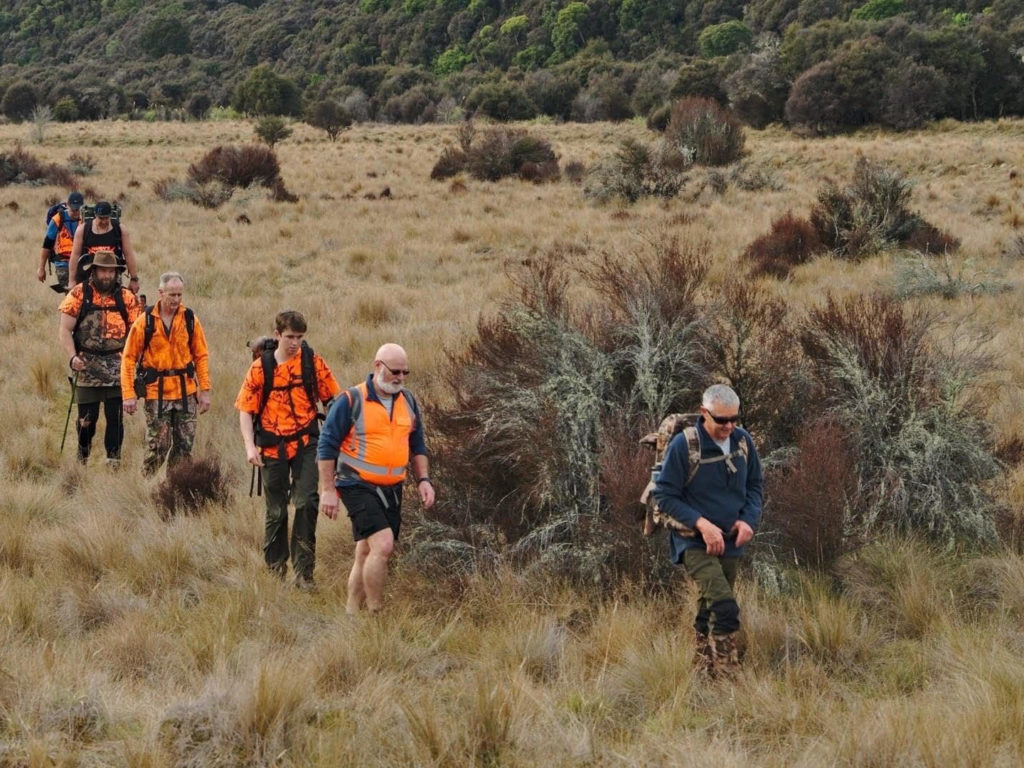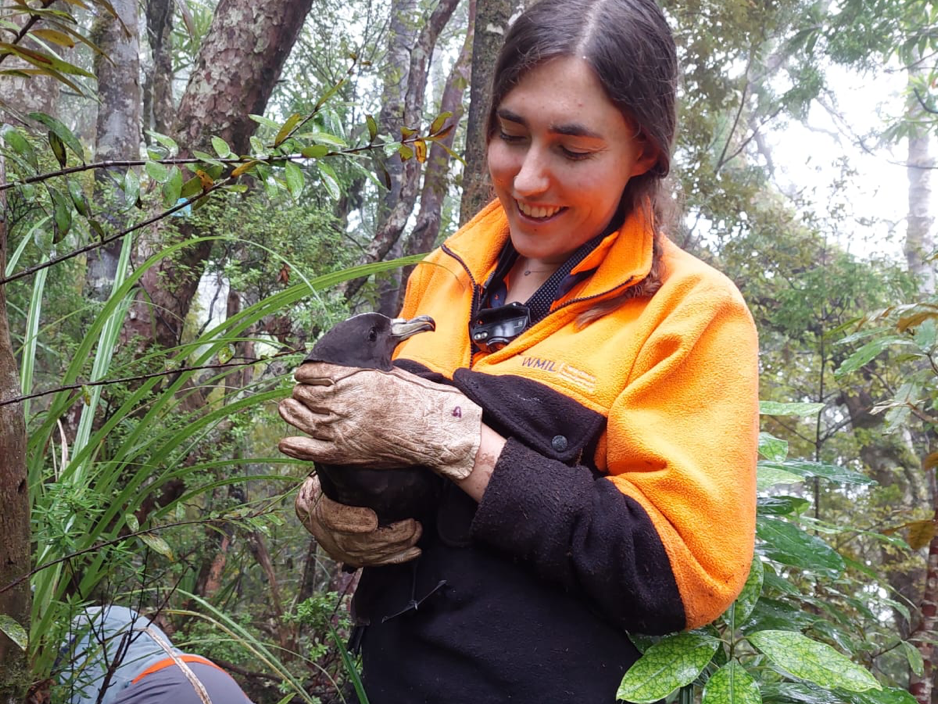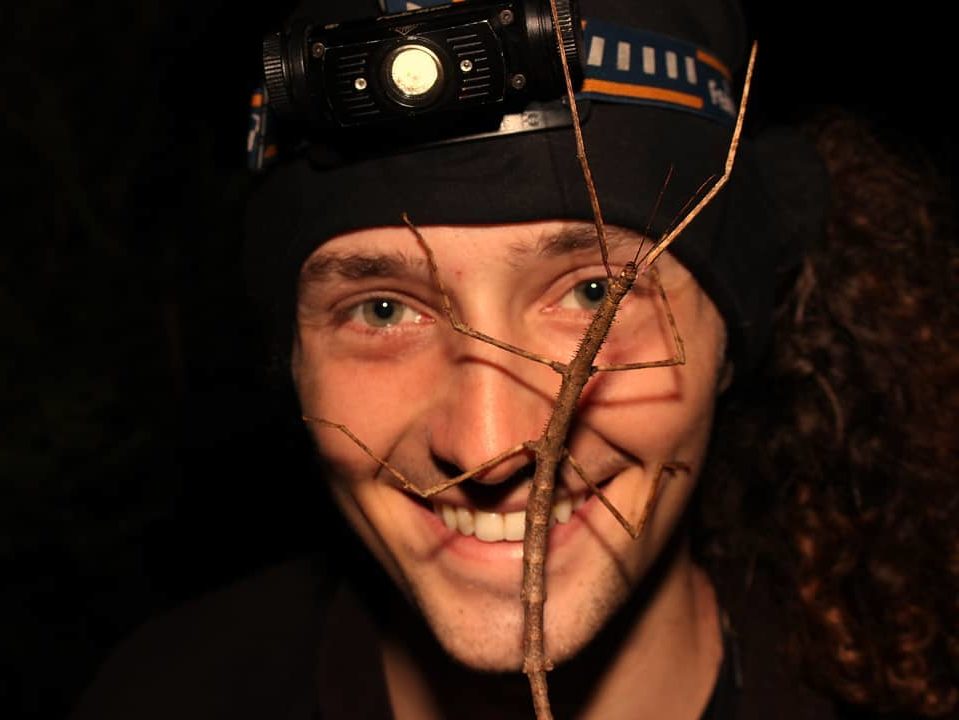When it comes to protecting nature, these five rangatahi “understood the assignment”. There’s a question mark hanging over their future ability to enjoy wildlife and wild places in Aotearoa New Zealand, but these rangatahi have taken conservation into their own hands.

1. Finn Giddy – trapper and hunter
Finn is combining his love of hunting and the great outdoors to make a career out of protecting native wildlife.
Based at home in Taupō, Finn’s office is the native bushland and forests around the lake. As an apprentice for pest control company Call of the Wild (part of the Predator Free Apprentice Programme), he’s helping bring down possum and rat numbers. The work is “bloody hard” – but rewarding. So much so, that Finn even volunteers his spare time with the local Sika Foundation, spending days at a time to help with trap lines to protect the Kaimanawa Ranges and the local whio (blue duck) population from introduced predators.
For other rangatahi who love nature, Finn says, “If you enjoy being out in the bush and protecting native species, this will be perfect for you.”

2. Marcia Welch – ecologist
Marcia is an apprentice ecologist and often has her hands full with native birds – literally.

She has put sleep and her fingers on the line for conservation, but she wouldn’t have it any other way. On a memorable work trip with Wildlife Management International, Marcia visited Aotea (Great Barrier Island) to monitor the threatened tākoketai (black petrels). She huddled in the middle of the night, monitoring the seabirds during their most active time in the dark, gathering essential insight into how better protect them. By day Marcia banded juvenile tākoketai, which required sticking her arm into a dark burrow and often receiving the sharp bite of an interrupted petrel.
Working as an ecologist with amazing birds and facilitating interactions between people and petrels gives Marcia “an incredible sense of hope for the future of this endangered species.”
3. Latasha Wanoa – community and engagement advisor
Tash is a proud descendant of the whenua in which she lives and has been nurtured on the East Cape of the North Island. Embracing her role as a natural-born kaitiaki, she works as a community and engagement advisor for one of the largest pest control operations – Raukūmara Pae Maunga, and as a taiao (environment) advisor for Te Runanganui o Ngati Porou.
Her jobs allow her to work closely with her iwi, Ngati Porou, and turn her connection to nature into action. She says, “Being Māori, the connection that I have to my surrounding lands is embedded deep into the way I have been raised and is a major part of who I am as a person. In turn, this places me with a great sense of responsibility to protect the environment that has raised me, to ensure future generations that same opportunity.”
Tash’s love for the rich natural environment of East Cape fuels her at the heart of every kaupapa – but being in nature also re-energises her wairua. There is a lot of work to be done to protect and care for the environment, but she says, “we cannot give 110% to the taiao if we are not 110% ourselves.”

4. Sam Purdie – photographer and environmental educator
Sam is a wildlife photographer and herpetologist raising awareness for lesser-known natives like spiders, wētā, and lizards.

A self-described “animal man”, Sam travels to remote areas of Aotearoa and spends hours searching and countless late nights to photograph wildlife. While Aotearoa is a land of birds, there are more endemic lizard species than bird species. Sam shares his amazingly detailed photographs of endangered tree-climbing skinks, scythe-clawed spiders, emerald green geckos and carnivorous velvet worms on social media.
His photography and work as an environmental educator at Dunedin’s Orokonui Ecosanctuary inspires people with the wonder of nature, bringing attention to often ignored wildlife species. Sam says, “if more New Zealanders became aware of how special our wildlife is, people would certainly care more.”
5. Elizabeth Werner – predator free champion and volunteer
Elizabeth believes what we do makes a difference every day – and her long list of accomplishments at a young age is certainly making an impact.
Her crush on conservation started while bushwalking as a child, and after receiving a humane rat trap as a birthday present, she’s been involved in predator trapping and wildlife conservation ever since.
Elizabeth coordinates pest free schools in her home suburb of Tawa, Wellington, volunteers at Zealandia wildlife sanctuary, became a Blake Department of Conservation Takahē Ambassador, volunteers in the Kākāpō supplementary feed out programme and recently finished up a bachelor’s degree in ecology and biodiversity. She begins a job with Predator Free Wellington soon.
She says young people are not only extra hands for conservation labour, rather, “youth can bring a different perspective, but it is also important we all learn from each other.”


